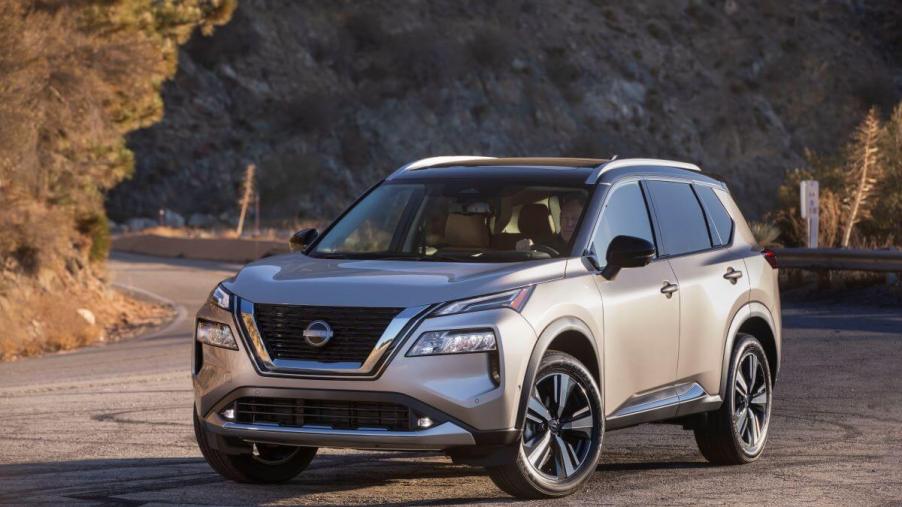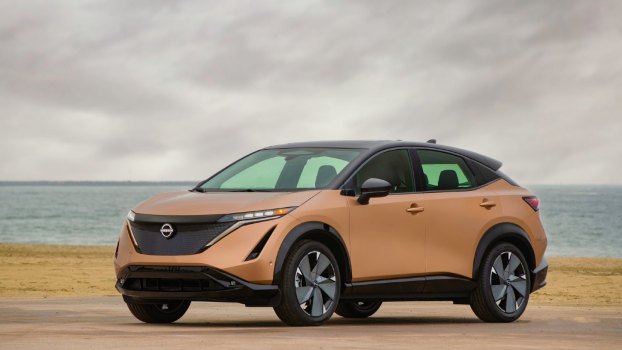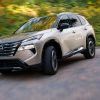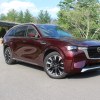
3 Reasons the Nissan Rogue Is More Popular Than the Hyundai Tucson
Nissan has a couple of pretty popular models this year. One of them is the Nissan Rogue, a compact SUV going up against the likes of many similar vehicles in its class. According to the first quarter sales, the Rogue is more popular than most of its competitors, including the Hyundai Tucson. What makes it so popular over Hyundai’s small SUV? Let’s look at three possible reasons.
How the 2023 sales figures compare with the Nissan Rogue and the Hyundai Tucson
According to Nissan, the brand sold 235,818 units across its entire lineup in the first quarter of this year, which is 34,737 more than the same period in 2022. Its Rogue model saw 76,499 sales during that time. In 2022, it only sold 45,235, making this year a 69.1% increase.
With Hyundai’s Tucson, sales in May 2023 were 18,038, an increase of 3,886 units sold in 2022. For the first quarter this year, it saw 46,170 units sold. Last year’s figures for the same period were 39,655, according to GoodCarBadCar.
Nissan’s Rogue sold about 30,000 more vehicles than Hyundai. In fact, the Rogue is the second most popular compact SUV behind the RAV4 model in 2023. It even outsold the Honda CR-V, but in 2022 it fell behind the RAV4 and the CR-V in sales for the same period.
1. Performance
Powering up the Nissan Rogue is a 1.5-liter three-cylinder engine producing 201 hp and 225 lb-ft of torque. Paired with it is a continuously variable transmission. The Hyundai Tucson offers a 2.5-liter four-cylinder generating 187 hp and 178 lb-ft. Working alongside it is an eight-speed automatic transmission.
Nissan’s Rogue model can go from 0 to 60 mph in 7.5 seconds, almost two seconds faster than the previous year’s version. With its larger engine, Hyundai’s Tucson can do the same run in 9 seconds. The main difference is the Rogue uses an Intercooled VC Turbo unit, while the competitor sports a standard Inline-four engine.
2. Fuel economy
Regarding fuel economy, the Nissan Rogue outshines the Hyundai Tucson. For the front-wheel model, Nissan offers 30 mpg in the city and 37 mpg on the highway. If you opt for an AWD version, you can expect around 28 mpg on city roads and 34 mpg when traveling on the highway.
The Tucson has its good points and bad points, and its EPA ratings fall in the drawback area. Its front-wheel drive model can get about 25 mpg when traveling in the city and 32 mpg on the highway. Upgrading to the all-wheel drive version will get you 23/28 mpg (city/highway). However, Hyundai offers a hybrid version, which will get you 35 mpg overall, but it will cost you a few thousand more for the base trim than what Nissan offers for its entry-level Rogue.
3. Standard features and accessibility
The Nissan Rogue comes with some useful features as standard equipment on all of its trims, including automatic emergency braking, blind-spot warning, forward collision warning, rear cross-traffic alert, and rear seatbelt minder, to name a few. Its ProPilot Assist system is also standard, but only on the SV version and up. Hyundai also offers some of these features as standard, but not on all trims.
The Rogue is also easier to get in and out of. Since it’s known as a family-friendly SUV, owners will be pleased the rear doors open to a 90-degree angle, allowing them to get children in and belted without a struggle. The seats are also at the right height, so the driver or passengers can easily slide in and out when needed. Some of the features of the Hyundai Tucson, like its gear selector, are more complicated to use, making it less than useful for drivers.
Both the Hyundai Tucson and the Nissan Rogue are top SUVs in their class, but the Rogue is more popular with drivers, as the sales figures show. It might be because of its performance, fuel economy, and standard features, making it a hit with families.



